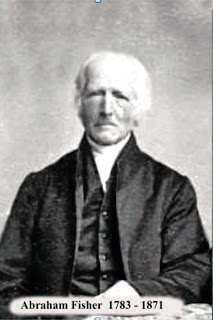Pictures and stories of interest about Ring, Dungarvan, County Waterford
Saturday, October 31, 2009
Halloween in Ring
They afterward met at some rendezvous, and in merry revelry celebrated the festival of Samhain in their own way. When the distant winding of the horns was heard, the bean a’ tigh [woman of the house] prepared for their reception, and got ready the money or builín (white bread) to be handed to them through the half-opened door. Whoever heard the wild scurry of their rush through a farm-yard to the kitchen-door — there was always a race amongst them to get possession of the latch — will not question the propriety of the word aimiléis [mischief] applied to their proceedings.
The leader of the band chaunted a sort of recitative in Gaelic, intoning it with a strong nasal twang to conceal his identity, in which the good-wife was called upon to do honour to Samhain… “A contributor to An Claidheamh Soluis, 15 Dec. 1906, 5, gives a example of these verses, from Ring, County Waterford:
‘Anocht Oidhche Shamhna, a Mhongo Mango. Sop is na fuinneogaibh; dúntar na díirse. Eirigh id’ shuidhe, a bhean an tighe. Téirigh siar go banamhail, tar aniar go flaitheamhail. Tabhair leat ceapaire aráin agus ime ar dhath do leacain fhéin; a mbeidh léim ghirrfiadh dhe aoirde ann ages ciscéim choiligh dhe im air. Tabhair chugham peigín de bhainne righin, mín, milis a mbeidh leawhnach ’n-a chosa agus uachtar ’n-a mhullaigh; go mbeidh sé ag imtheacht ’n-a chnocaibh agus ag teacht Ôn-a shléibhtibh, agus badh ó leat go dtachtfadh sé mé, agus mo chreach fhada níor bhaoghal dom.’

‘(“Oh Mongo Mango, Hallow E’en tonight. Straw in the windows and close the doors. Rise up housewife, go inside womanly, return hospitably, bring with you a slice of bread and butter the colour of your own cheek, as high as a hare’s jump with a cock’s step of butter on it.

Sunday, October 25, 2009
Seaweed at Clonea

This very unusual sight met me when I arrived for my daily walk at Clonea Strand. The following text is an extract from my book 'The way it was', it deals with the Subject of seaweed which was harvested up until the late 60s at clonea.
Some people traveled great distances to procure a product that, up to the turn of the nineteenth century was a vital ingredient in soil cultivation.both In Ballinacourty and Ring.
Like farmyard manure, seaweed was complete manure. It contained the three principle constituents which were of value as fertilisers, nitrogen, phosphate, and potash. Compared to farmyard manure, fresh seaweed contained the same percentage of nitrogen, somewhat less phosphates and about twice as much potash. In seaside areas, the seaweed also served a special purpose, supplying a vast quantity of organic matter, which was particularly useful for sandy soils in dry weather as it helped in the retention of moister. Of course the one set–back with the seaweed was that it rotted lot a faster than farmyard manure, therefore, its effect on the soil was short-lived. Ballinacourty, like other tight knit farming communities, was known for its exemplary co-operative behaviour at harvest time. This was a time when everybody worked together, moving from farm to farm in order to complete harvesting before the bad weather. However, when the east wind announced the arrival of a seaweed bonanza, brotherly love was forgotten about. Just for the duration of time that it would take to complete the harvesting. There would be rows over who would go where on the strand. Verbal battles would be fought over claim jumping, and as far as I was able to ascertain, there was at least one physical assault, which can be verified.

If for example, a seaweed bonanza was expected in on a Sunday night, preparations would be made and animals fed and ready for the hour of midnight. The Sabbath observance would not be broken back then. However, at the stroke of midnight all hell would break loose. A mile of Donkeys and drays. Horses and drays, jennets and drays would be heard hurdling through the darkness accompanied by the cries of their owners as they encouraged the somewhat reluctant animals down the Ballinclamper road. Very often, men would struggle home from places like Elsteads pub, from dances, and from the comfort of a neighbour open fire, where stories were recalled in the flickering firelight. Games of 45 would be abandoned in houses as all answered the call of the sea. Men would be transported from these comfortable surroundings and into the lashing rain and the chilling east winds, the heat of the hob a memory to them as they ploughed chest-deep into the ice cold breaking waves.



Anna Haslam and the Quakers of Piltown and Youghal
My god friend Mike Hackett who resides this side of Youghal Bridge is Youghl's foremost Historian. Mike has several books behind him And...

-
Saving the Oceans, one man’s commitment. ‘I want to give something back.’ By Eddie Cantwell This is the e...
-
Joshua William Strangman. A Quaker of Waterford and his connection with Ring fishermen. By Joan Johnson ...
-
As chronicled by Peig (Terry) Uí Réagáin sometime in the early 1980 ’ s. My thanks to to Seán O' Réagáin in the US, who is the son o...






